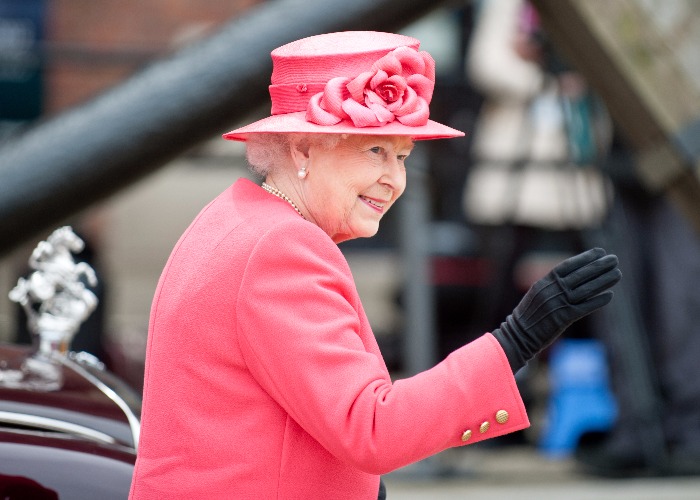How much does the British Royal Family cost per year?

What does the Royal Family cost you each year? And are they value for money?
According to the official website of the British Monarchy, the Royal Household is "committed to ensuring that public money is spent as wisely and efficiently as possible”.
But just how much money does it get from the likes of you and me?
The Sovereign Grant
Each year, the Monarchy receives a Sovereign Grant, funded by the Treasury. This cash is given to Her Majesty The Queen as funding for the official duties carried out by Her Majesty and her family. The latest figures report that the Sovereign Grant was worth £35.7 million in 2014-2015 – or 56p from each of her subjects – an increase from the 53p we each forked out in 2012-13.
The Sovereign Grant was introduced in 2012 as a single, consolidated annual grant. Before that, the funding for official duties came from the Civil List and three Grants-in-Aid.
The grant is reviewed every five years by the Royal Trustees (who include the Prime Minister and the Chancellor of the Exchequer).
What do they do for the money?
The Royal Family carry out a number of official engagements. Examples of such engagements over the next few weeks include attending a court lunch, hosting an awards ceremony, visiting a mentoring programme and hosting a dinner.
Last year, Princess Anne, undertook 456 UK engagements and a further 88 overseas engagements, beating Prince Charles for the accolade of the hardest working royal for the first time in eight years. The Queen carried out 436 engagements last year, 35 of those being overseas.
The Duke of Edinburgh also undertook 250 engagements in 2015, despite being 94 years old.
Enjoy tax-free returns from the stock market with a Stocks & Shares ISA
The Duchy of Lancaster
The Royals don’t get by on the Sovereign Grant alone – the Queen is a wealthy woman in her own right. According to the Sunday Times Rich List 2015, she is worth £340 million, making her the 302nd richest person in the country.
The Queen generates income from her land and property portfolio. These assets are known as the Duchy of Lancaster and are held in trust for the sovereign.
The Duchy, a private estate covering 18,433 hectares, is managed and run for the Queen. And although she has no say in how it is run, she receives all of the net profits – about £16 million a year. This is known as the Privy Purse and the funds go toward a mixture of private and official expenditure, including the offices of Prince Andrew, Prince Edward and Princess Anne and the upkeep of Balmoral Castle.
The Queen voluntarily pays Income Tax on the Duchy profits, though official accounts do not say exactly how much Her Majesty pays.
The Duchy of Cornwall
The Duchy of Cornwall works along similar lines. It's a private estate that funds the public, charitable and private activities of the Prince of Wales and his family, and owns land and property across 23 counties in England and Wales. These include 900 hectares of woodland in Cornwall, most of Dartmoor, the Oval cricket ground and the Isles of Scilly.
In 2014/15, it brought in a total income of £32.6 million. The Prince of Wales is entitled to the annual net revenue surplus of the Duchy, which was worth £19.8 million last year.
What about tourism?
Many of us assume that tourism is where the Royal family can provide a nice little earner for the country.
But the UK’s tourism body VisitBritain states that while international tourism is Britain’s third largest service export, with inbound tourism to Britain worth £26.2 billion a year, only some of that figure can be attributed to attractions and events with a connection to British monarchs and heritage.
A report by Brand Finance last year suggested that tourism revenue connected to the Monarchy and its heritage was worth about £535 million a year.
Other boosts to the economy
That same report from Brand Finance outlines other ways that the Royals boost the British economy though, namely the boosts to fashion and other brands worn, used or otherwise endorsed by the Royals.
According to Brand Finance, the 'Kate Effect' is worth £152 million a year, the 'Charlotte Effect' is worth £101 million a year and the 'George Effect' is worth £76 million.
Similarly, firms that hold a Royal Warrant (such as the Chiltern Valley Winery & Brewery) enjoy a boost of a whopping £134 million a year as a result.
The 'true' cost?
Few of us would moan about spending less on the Monarchy than we do on a first class stamp. However, there is some dispute about how accurate those figures are.
According to Republic, a group which campaigns for a democratic alternative to the Monarchy, the true cost of the Monarchy to the British taxpayer is actually £334 million a year – nearly ten times more than the figure published by the Royal Family.
It points to the fact that the Royal Family's security bill, for instance, is picked up by the Metropolitan Police, while the costs of royal visits are borne by local councils.
Picture credit: Shaun Jeffers / Shutterstock.com
Enjoy tax-free returns from the stock market with a Stocks & Shares ISA
Be better off with loveMONEY:
Why 70,000 people may not get any pension
Comments
Be the first to comment
Do you want to comment on this article? You need to be signed in for this feature